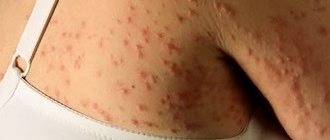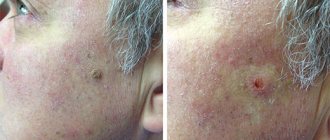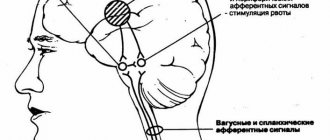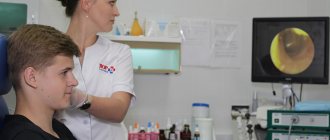Dermatology specialists disagree on which list of diseases to classify as itchy skin disorders. According to the general idea of dermatosis of this nature, it is formed by most types of neurodermatitis, which in 99% of cases is accompanied by itchy discomfort. In addition to neurodermatitis, dermatosis with severe itching is often classified as:
- dermatosis and dermatitis of pregnant women;
- urticaria (better known in the practice of treating dermatosis as urticaria);
- acariasis - acarodermatitis or itchy scabies;
- psoriatic pathologies;
- contact, allergic, atopic, seborrheic dermatitis.
general information
Dermatosis is the name of congenital and acquired skin diseases, manifested by rash, redness of the skin, burning and other symptoms.
In most cases, we are talking about inflammatory pathologies caused by allergic reactions or infections. Dermatoses can be associated with dangerous conditions of the nervous and endocrine systems. At the same time, nails and hair are also exposed to pathological effects. Almost every person has experienced at least one form of dermatosis during their lifetime. This may be a temporary irritation of the skin when exposed to an allergen or a severe chronic condition. Inflammatory skin diseases are more common among women. Some types of dermatosis, such as psoriasis, are difficult to treat, but modern means can successfully eliminate the most unpleasant symptoms of such ailments.
What happens to the human body before skin symptoms appear?
Allergic skin diseases are based on changes in the reactions of the immune and nervous systems. After initial contact with an allergen, the immune system remembers information about it, i.e. the body enters a state of heightened readiness to quickly react to the re-entry of the same antigen (sensitization). During this time, the person is not bothered by any symptoms. And when this allergen is reintroduced, a pathological immune process begins with damage to the skin and sometimes other organs.
Features of the organ
The skin is an integumentary organ that protects a person from a variety of external influences. Thanks to the skin, internal organs are protected from excessive exposure to heat, cold and ultraviolet radiation. It is also a kind of barrier that prevents the penetration of pathogenic microorganisms into tissues. The skin of different parts of the body may have different structures. Certain areas of the skin have hair. Sweat and sebaceous glands perform auxiliary functions.
Skin layers:
- The surface cover (epidermis), represented by five layers of cells. The outer layer consists of keratinized cells that protect the lower parts of the skin from physical, chemical and microbiological influences. Keratinized epithelial cells periodically exfoliate.
- The middle layer (dermis), which has a connective tissue structure. This area contains numerous blood vessels that supply the skin. The dermis also contains smooth muscles, elastic fibers, hair follicles, sweat and sebaceous glands.
- Subcutaneous fat tissue. This layer of skin contains a large amount of adipose tissue, which protects internal organs from physical impact. This section of the organ also contains blood vessels, nerves and other structures.
Additional functions of the skin include respiration, thermoregulation, immune defense, excretion and metabolism. The prevalence of dermatoses is not least due to the fact that the skin is constantly exposed to negative external factors.
Basics of therapy for dermatosis with severe itching
The system of actions to relieve the patient from the strongest factor of discomfort, which is itchy dermatosis, can vary greatly depending on the results of diagnostic manipulations. If dermatosis is a background disorder, then the underlying disease must be treated first. If the itching factor is a symptom, then it needs to be stopped, and its provocateur/disease must be cured.
Common practices in therapy for dermatosis with an itchy effect are:
- use of antihistamines (with rare exceptions);
- sedatives to calm the nervous system;
- glucocorticosteroids for advanced dermatosis;
- herbal medicine – soothing, nourishing skin;
- external complex of soothing gels/ointments/compresses;
- vitaminization.
In all cases, for the speedy disappearance of the itchy nature of dermatosis, it is recommended to create a hypoallergenic lifestyle for the person (hygiene, sanitation, ventilation) and develop an individual diet. Physiotherapy - relaxation therapy, acupuncture, etc. can be very effective for dermatosis.
Common types
Dermatoses may differ in their causes, symptoms and possible complications. Dermatologists encounter certain diseases more often in their practice.
Known diseases:
- A group of inflammatory skin diseases (dermatitis). Many people get allergic dermatitis because the immune system reacts to certain substances (allergens). Dermatitis can also be caused by infections, exposure to chemical irritants, endocrine diseases and other pathological conditions.
- Psoriasis is a chronic inflammatory pathology of the skin of a non-infectious nature. For many years, doctors did not know the cause of psoriasis, but new research has linked the etiology of this disease with dysfunction of the immune system. The disease manifests itself as numerous skin rashes in the form of papules and plaques. The first symptoms usually occur in adult patients.
- Eczema is an inflammation of the skin, characterized by the appearance of various rashes. Eczema often occurs against the background of pathologies of internal organs. External chemical influences can also cause an inflammatory response.
- Scabies is a parasitic infection that occurs when the scabies mite penetrates the surface layers of the skin. The disease is manifested by itching, the appearance of rashes and ulcers.
Many dermatoses have similar symptoms, so only a doctor can clarify the diagnosis with the help of special examinations.
Recognizing the cause of skin rashes
Since cutaneous dermatosis with a pronounced itching effect can act as an independent disease or a symptom complex against the background of other diseases, its diagnosis should be carried out at several levels.
- OAM, OAC, BAC to exclude neurology, against the background of which dermatosis with an itchy manifestation very often develops;
- An objective examination with a theoretical analysis of information about a person’s heredity, everyday life, habits, behavior in order to determine the likelihood of allergic dermatosis.
- Samples and tests, if necessary (to identify the agent or clarify the degree of its influence).
- Laboratory analysis (microscopy of cells in dermatosis) with scraping.
- Translucency.
Causes
Dermatoses can occur due to the influence of external and internal factors. External influences are most often represented by chemical irritants that affect the condition of the skin. Diseases of internal organs can also affect the condition of the skin. An important role in the etiology is played by hereditary factors that cause increased sensitivity of tissues to certain influences. The reasons for the development of some forms of dermatosis still remain poorly understood.
Possible reasons:
- Features of the immune system. Normally, immunity protects the body from the effects of pathogens. Immune system cells are present in the skin because this is the anatomical region that first encounters pathogens. In some cases, the immune system is hypersensitive to certain substances, such as pollen, dust or animal hair. Skin contact with such substances leads to an allergic reaction. The inflamed epidermis begins to itch.
- Autoimmune pathologies. When the immune system malfunctions, cells begin to attack healthy tissue. The patient experiences an inflammatory reaction, accompanied by redness and swelling of the skin. A typical example of autoimmune dermatosis is psoriasis.
- Hormonal imbalance. Normally, endocrine factors control the development of the skin. A deficiency or excess of certain hormones can lead to dermatosis. Thus, in adolescents during puberty, hormonal levels change, which often results in skin rashes.
- Metabolic disease. The structure of the skin depends on the constant supply of important components to the cells. A lack of certain vitamins or minerals can cause brittle nails or peeling skin.
- Exposure to pathogenic microorganisms. Bacteria, fungi, viruses and protozoa can attack the skin and cause infectious dermatosis.
- Uncontrolled use of medications. Thus, the use of antibiotics increases the skin's sensitivity to sunlight. Some painkillers also have a negative effect on the skin.
Clarifying the cause of dermatosis is important for selecting effective therapy.
Risk factors
In addition to the direct causes of pathology, doctors take into account the influence of additional factors related to heredity, lifestyle and the patient’s individual history.
Possible risk factors:
- Excessive ultraviolet exposure.
- Using personal hygiene products that are harmful to the skin.
- Insufficient skin hygiene.
- Genetic disorders (eg, epidermolysis bullosa.)
- Allergic history. If a person suffers from allergies, the risk of dermatosis increases.
- Diseases associated with a high risk of skin pathology: bronchial asthma, congestive heart failure, HIV infection.
- Professional activity that requires constant contact with chemicals and other irritants.
- Age. Inflammatory dermatoses occur more often in children and young patients.
- Hormonal changes in adolescents, pregnant women and other categories of patients.
Considering risk factors helps dermatologists prescribe preventative measures.
Symptoms
The manifestations of dermatoses are varied and contradictory. The most characteristic symptom of skin pathology is an itchy rash. The patient may develop small red spots, blisters, papules, warts, small tumors and other abnormal skin structures. The nature of the rash helps doctors determine the cause of the disease.
Other possible symptoms:
- Redness and swelling of the skin.
- The appearance of ulcers.
- Blister formations.
- Severe peeling of the skin.
- Brittle nails and hair loss.
- Excessive dry skin.
- The appearance of a crust.
- Constant fatigue.
- Decreased performance.
- Sleep disturbance.
Cosmetic defects that occur with dermatitis negatively affect a person’s mental state. Some diseases that manifest as profuse acne are difficult to treat, so patients are forced to adapt to their appearance.
Diagnostics
If symptoms of a skin disease appear, you should make an appointment with a dermatologist. During the consultation, the doctor will ask the patient about complaints and collect medical history information to identify risk factors for dermatosis. Then a general examination of the skin is performed to identify characteristic clinical signs of pathology. To clarify the diagnosis, the dermatologist needs the results of instrumental and laboratory tests.
Additional diagnostics:
- Laboratory blood tests. In the treatment room, a nurse collects venous blood and sends the material to the laboratory. Specialists evaluate the ratio and quantity of formed components, and also study the biochemical parameters of the blood. A blood test can detect signs of infection, autoimmune inflammation or other pathology.
- Dermatoscopy. Using a special device, the doctor takes an enlarged photo of the affected area of skin and studies the features of the rash. Dermatoscopy is important for differential diagnosis and exclusion of dangerous diseases such as melanoma.
- Laboratory examination of exudate. The specialist collects secretions from ulcers or other skin formations. The resulting material is studied in the laboratory to detect pathogenic microorganisms or signs of inflammation.
- Histological examination of the skin. A biopsy is performed if it is necessary to exclude oncology.
- Carrying out allergy tests. The doctor places microscopic particles of the irritant on the skin and monitors the condition of the tissue. This study is necessary to find the source of the allergy.
If necessary, the dermatologist may prescribe additional tests, including a general urine test. A timely appointment with a doctor helps to quickly clarify the cause of the rash and select effective treatment.
conclusions
It is necessary to pay due attention to patients complaining of skin itching and conduct a thorough differential diagnosis to identify the causes of itching.
Among antihistamines, sehifenadine is a priority compared to drugs of the first and second generation ( Gistafen
), which has a pronounced antipruritic effect, has a high safety profile due to the selectivity of action and the absence of a sedative effect.
Histaphene
is a drug that has been proven to reduce the concentration of histamine in the blood serum, which is extremely important in the treatment of diseases accompanied by systemic itching.
with Histaphen seems promising
and
Adaptolom
.
The anti-anxiety activity of Adaptol
and its good tolerability in combination with dermatological agents make it possible to recommend it to improve the quality of life in chronic dermatoses (including skin itching) accompanied by anxiety disorders.
Treatment methods
Polymorphic skin formations, characteristic of certain types of dermatosis, arise for various reasons, so treatment is selected after diagnosis. Most often, a dermatologist prescribes drug therapy. The dermatologist takes into account possible contraindications before selecting therapy.
Frequently prescribed drugs:
- Corticosteroids are medications that ease the inflammatory response.
- Antibiotics are drugs that destroy pathogenic microorganisms.
- Antiseptics for external use.
- Antihistamines are medications that prevent the development of an allergic reaction and skin lesions.
- Various immunosuppressants that suppress autoimmune reactions.
The listed medications can be prescribed in the form of ointments, gels, tablets or solutions for intravenous administration. Local use of corticosteroids can reduce the risk of side effects. Additional treatment options include surgery and physical therapy. In most cases, the dermatologist prescribes a hypoallergenic diet and vitamin supplements to the patient. Compliance with the doctor’s recommendations helps prevent the development of relapse.











